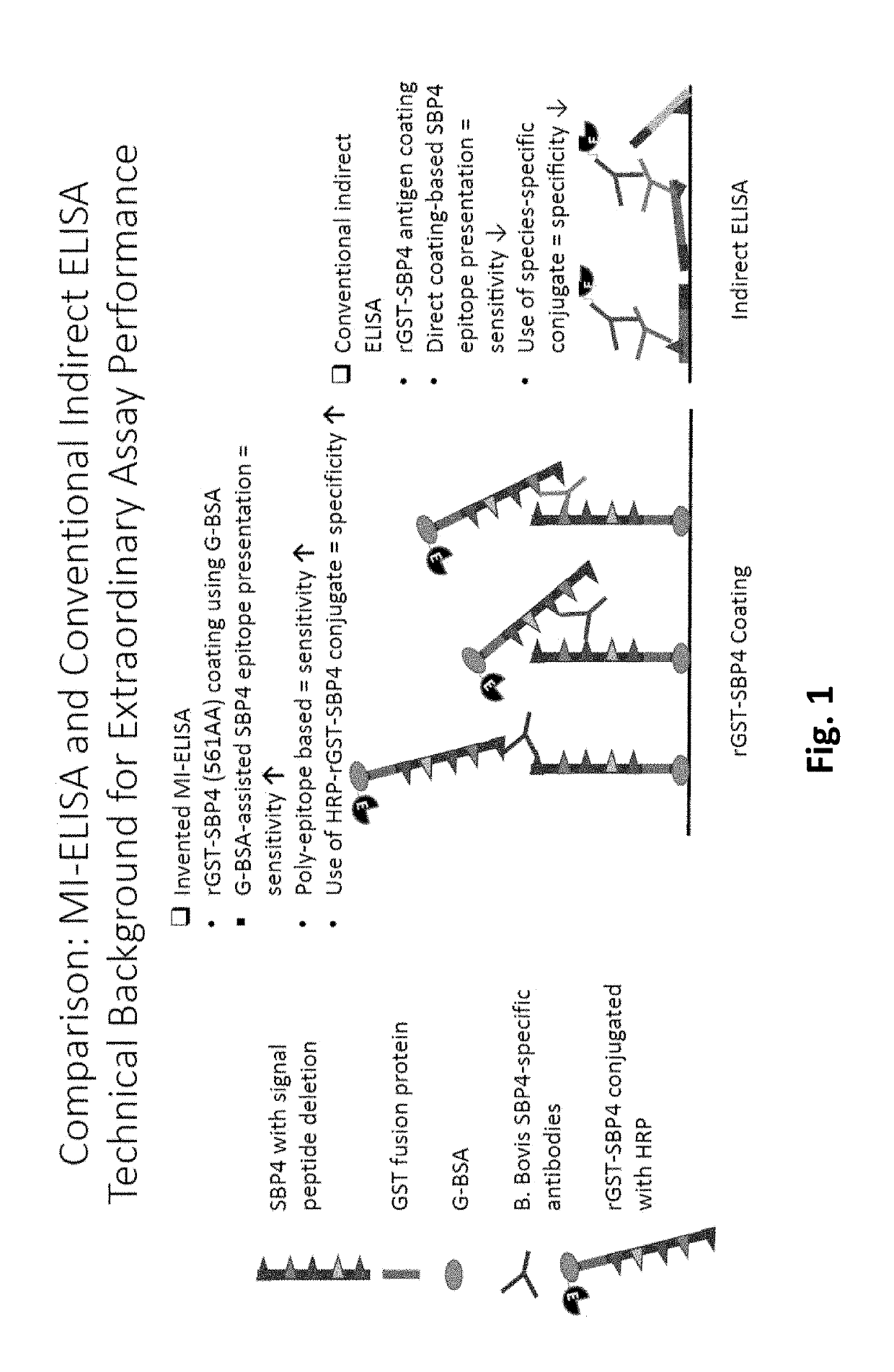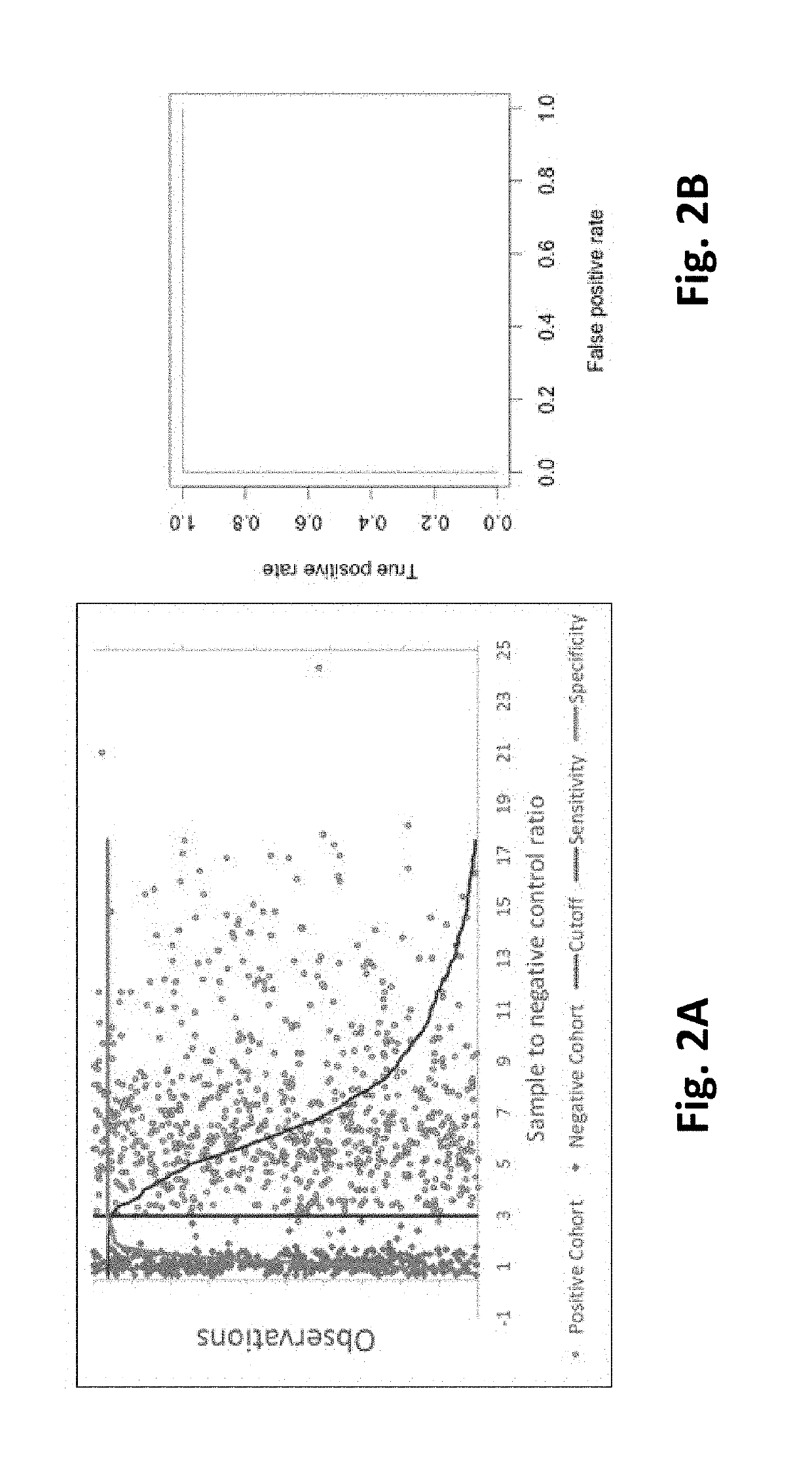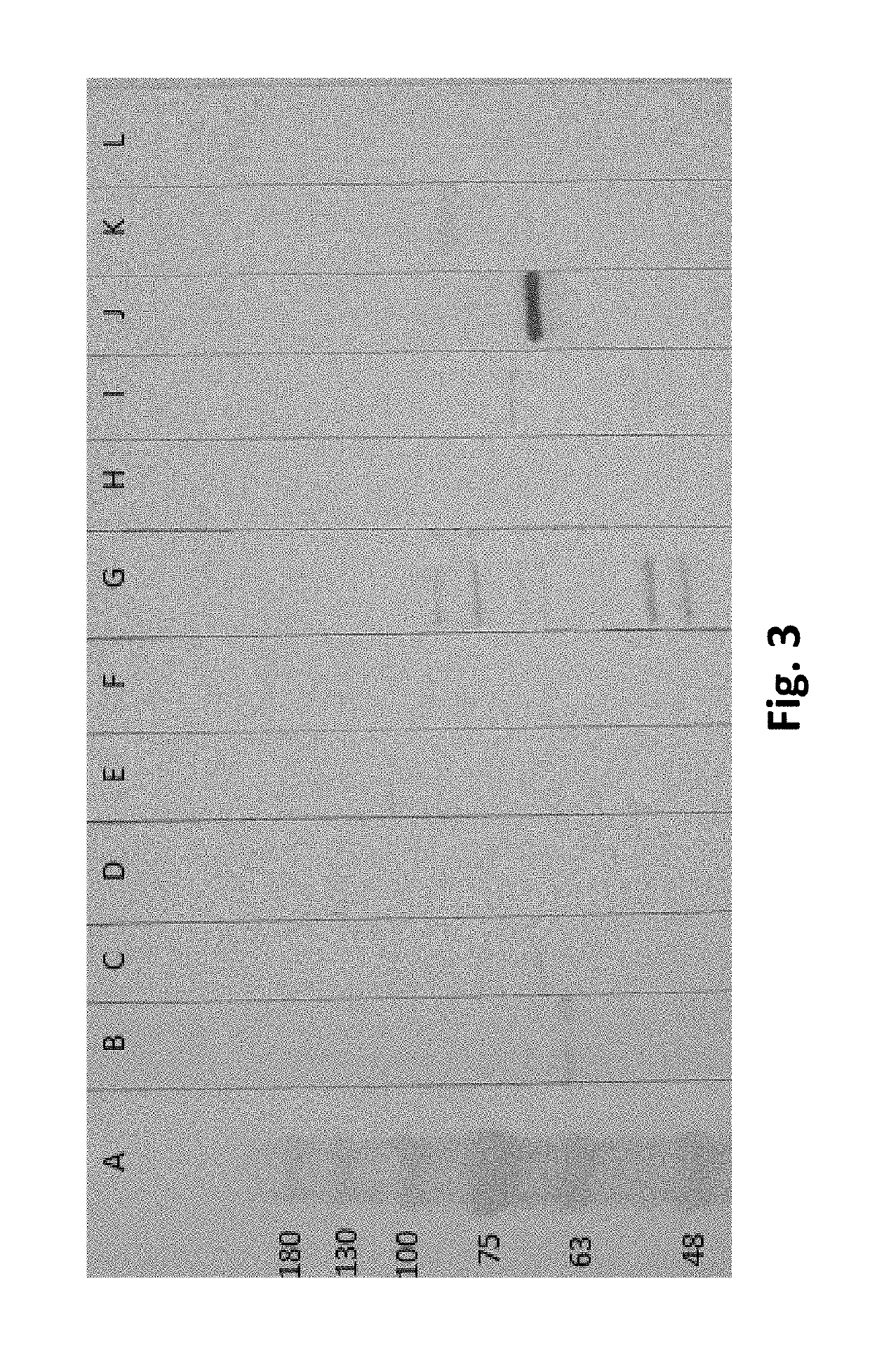Modified Indirect Enzyme Linked Immunosorbent Assay Optimal for Monitoring Acute and Long Term Carrier Infections of Diverse Babesia bovis Strains
a technology of indirect enzymes and immunosorbents, applied in the direction of transferases, peptide sources, instruments, etc., can solve the problems of inability to report long-term (>100 days post-infection or vaccination) serological monitoring of i>b. bovis/i>-specific antibody responses in persistently infected cattle, and the reliability of monitoring longer post-infection period has not yet been determined, so as to effectively control intra- and inter-herd transmission
- Summary
- Abstract
- Description
- Claims
- Application Information
AI Technical Summary
Benefits of technology
Problems solved by technology
Method used
Image
Examples
example 1
Cloning and Expression of Spherical Body Protein-4
[0042]A cDNA encoding the recombinant fusion protein rGST-SBP4 comprised of glutathione S-transferase (GST) and recombinant spherical body protein-4 (SBP4) of B. bovis (T2Bo strain) modified by having the signal sequence deleted (GenBank accession number: KX524469) was cloned into the pGEX-2T vector (New England BioLabs, Ipswich, Mass., USA). This recombinant (r) GST-SBP4-containing vector was transformed to BL21 cells (New England BioLabs, Ipswich, Mass., USA) and expressed as follows. Briefly, 200 mL of an overnight culture of pGEX-2T / SBP4-transformed BL21 cells were inoculated into 1.8 liters of LB medium (Becton, Dickinson and Company, Sparks, Md., USA) containing 0.01% ampicillin and grown at 37° C. for 3 hr. Following addition of 0.048 g of isopropyl-β-D-thiogalacto-pyranoside (IPTG; US Biologicals, Salem, Mass., USA), the bacteria were incubated at 37° C. for an additional 5 hr. The bacteria were harvested by centrifugation at...
example 2
Purification of rGST-SBP4 Fusion Protein; Conjugation with Horseradish Peroxidase
[0043]The recombinant GST-SBP4 fusion protein was purified from the supernatant described above using glutathione-agarose beads (Sigma G4510) according to the manufacturer's instruction. Briefly, glutathione-agarose beads equilibrated with PBS containing 1% Triton-X 100 were resuspended in the clarified lysate to agitate for 60 minutes at room temperature. The beads capturing recombinant GST-SBP4 were pelleted by centrifugation and washed with PBS three times. After the last wash of the beads, the recombinant GST-SBP4 was eluted from the beads using the elution buffer containing 30 mM reduced Glutathione in 50 mM Tris-HCl (pH 9.0). The eluted rGST-SBP4 was conjugated with horse-radish peroxidase according to the method previously described (Nakane and Kawaoi. 1974. J. Histochem. Cytochem. 22:1084-1091). The conjugate concentrate was stabilized by adding a final concentration of 10% heat-inactivated goat...
example 3
Immunofluorescence Antibody Assay
[0044]The IFA was performed as previously described (Goff et al. 2006, supra; Goff et al. 1982, supra) using 50 μl of a 1 / 50 dilution of serum in serum dilution buffer (1×PBS) and substrate slides prepared using red blood cells parasitized by two B. bovis strains Mo7 and T2Bo. A positive result was defined as fluorescence equal (1+) to or greater than (2 to 3+) that of a weak positive control sample defined by IFA, western blot and RAP-1 cELISA after collection from a bovine experimentally-infected with Mo7 stain. A negative result was defined as comparable to the background fluorescence of a negative control serum collected from a B. bovis-negative herd in the northwestern U.S.
PUM
| Property | Measurement | Unit |
|---|---|---|
| optical density | aaaaa | aaaaa |
| pH | aaaaa | aaaaa |
| OD | aaaaa | aaaaa |
Abstract
Description
Claims
Application Information
 Login to View More
Login to View More - R&D
- Intellectual Property
- Life Sciences
- Materials
- Tech Scout
- Unparalleled Data Quality
- Higher Quality Content
- 60% Fewer Hallucinations
Browse by: Latest US Patents, China's latest patents, Technical Efficacy Thesaurus, Application Domain, Technology Topic, Popular Technical Reports.
© 2025 PatSnap. All rights reserved.Legal|Privacy policy|Modern Slavery Act Transparency Statement|Sitemap|About US| Contact US: help@patsnap.com



